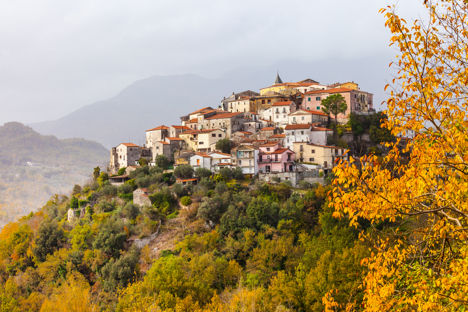
The story of La Signora di Conca Casale
The tiny Molisani village of Conca Casale is easily missed, but stop in on your travels through the region and you’ll find a fascinating, centuries-old butchery tradition, as well as one of Molise’s finest food products – a pork sausage known as ‘The Lady of Conca Casale’.
The story of La Signora di Conca Casale
The tiny Molisani village of Conca Casale is easily missed, but stop in on your travels through the region and you’ll find a fascinating, centuries-old butchery tradition, as well as one of Molise’s finest food products – a pork sausage known as ‘The Lady of Conca Casale’.
You can reach Molise in under two hours from both Naples and Rome. Coming from the latter brings you through the Latin Valley, past Frosinone and then into Cassino – where the famous Abbey of Montecassino looms from a nearby mountain top. It’s hard to believe this part of Italy remains so undiscovered – Molise is unquestionably beautiful, but it has the lowest population density in Italy, and remains relatively unknown amongst tourists.
As you cross into Molise, you’ll likely find yourself driving through the ancient and historic town of Venafro. Legend has it that the town was founded by Diomedes – the mythical Greek hero of Homer’s Iliad – on his return from the siege of Troy. Whilst that seems unlikely, Venafro is certainly home to its fair share of history – the old Roman town centre is largely visible, as is the old theatre. Head north and you’ll find a single track that winds up the slopes of Mount Santa Croce. It’ll leaving you in the tiny village of Conca Casale, home to around 200 people and a very unusual tradition of sausage-making.
Most of Italy’s salumi tradition is born out of thrift and survival, but La Signora is an entirely different beast. The likes of 'nduja, soppressata and mortadella all started life as peasant food – clever cooks would take cheap cuts of meat and offal and make them into something delicious. La Signora, on the other hand, is made from prime cuts of pork. This sausage wasn’t eaten by those who made it, rather, it was used by the village to pay for services they otherwise wouldn’t be able to afford – those of a doctor, or a notary for example.
Amazingly, the exact recipe has survived to the present day, having been handed down from generation to generation in the village. The sausage is made up of pork loin, belly, thigh and shoulder – lean, expensive cuts of meat on the whole, which are then mixed with back fat. Rather than pushing all the meat through a mincer, all the mincing is done by hand, which gives 'The Lady' her distinctive coarse grain. The minced meat is seasoned with pepper and red pepper powder, as well as wild fennel – a typical Molisani flavour that grows all over the windswept pastures of the region. The mixture is left to mature for a few hours, during which time the sausage casing is washed in a a mixture of wine, vinegar, orange, lemon and cornflour. Finally, a funnel is used to stuff the filing inside the soaked casings, before being secured with string and left to mature.
La Signora goes through a short smoking process, before being left in cool, dry hanging rooms. How long the sausages are left to hang depends on how big the sausages are – 'The Lady' can be anywhere from 800 grams to a whopping five kilograms – but generally, they’re hung over the winter and then eaten during the summer.
If you’re lucky enough to find one, the flavour is intriguing – unlike any other salumi you might have eaten. The pigs of Conca Casale are bred in a semi-wild state and fed mostly on vegetables, rather than processed pig feed or silage. The resulting pork is rich and meaty and, when combined with the creamy back fat, it makes for a luxurious flavour and texture that sits up perfectly with the pungent aroma of wild fennel and a hint of citrus from the casing.
The size of the village, the expense of the ingredients and the size of 'The Lady' herself means that only a few hundred of these sausages are made each year. Even centuries later, The Lady is hard to find and still worth a pretty penny, but thankfully, she’s still alive and well in Molise.

